I would like to explain the treatment I am currently performing through a case study.
First, the growth period
This child is a transfer patient from the US and was first seen in my office when he was 11 years and 1 month old. He had been receiving first phase treatment in the US and was wearing some appliances for space maintenance (appliances that secure space to align all teeth). My first thought is that at this age, the growth spurt is about to begin. I think about what should I do to promote jaw growth?, and what should I not do? From my clinical experience, it is important for the jaw joint and the bite in the mouth to be stable for jaw growth, so if there is a possibility of hindering it, we should eliminate them and incorporate something that will stabilize it. In this case, we removed the appliances that only considered the alignment, and asked to wear a stabilization splint at night to stabilize the bite, prioritizing the growth of the lower jaw. This is the same as creating the best possible environment for raising a child. When viewed from the side, the mouth is slightly protruding, so I thought that if the lower jaw grew and the chin came forward, the face would be more balanced.
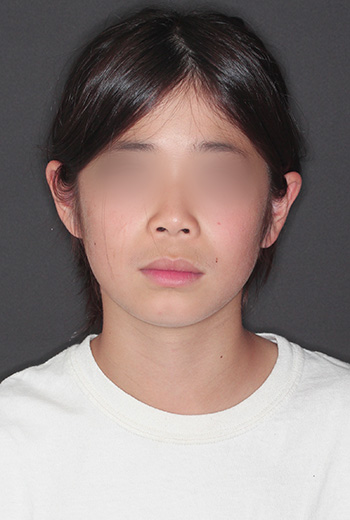
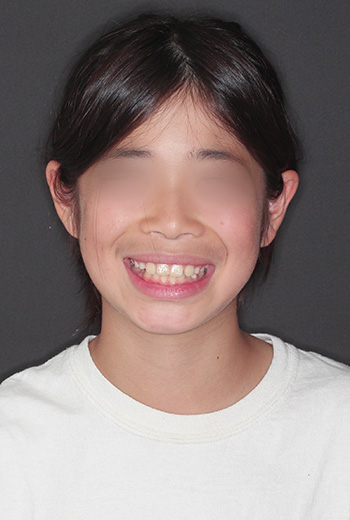
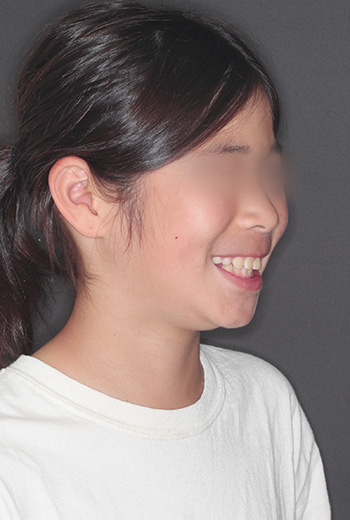
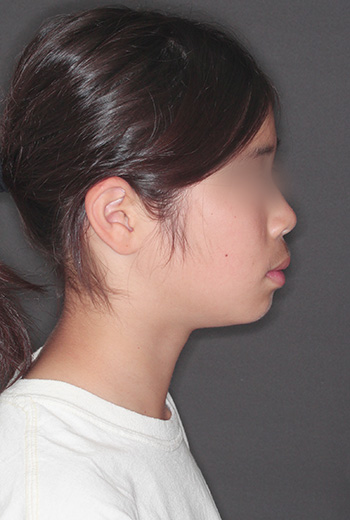
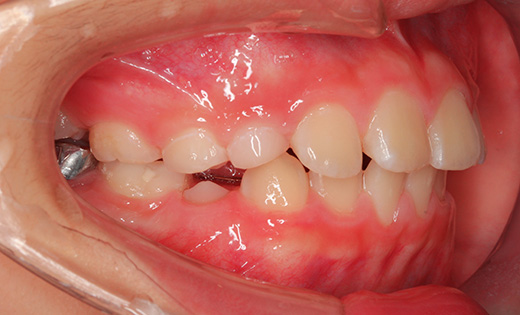
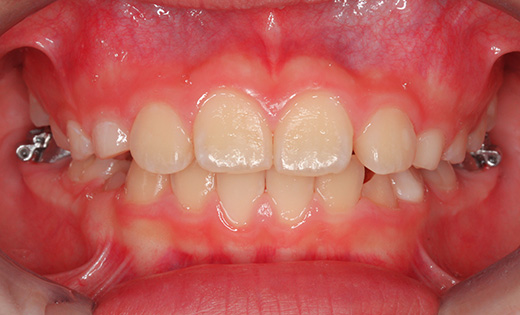

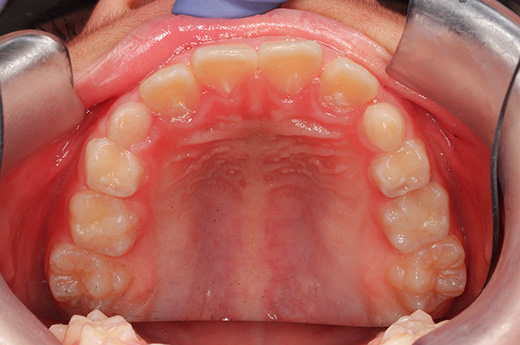
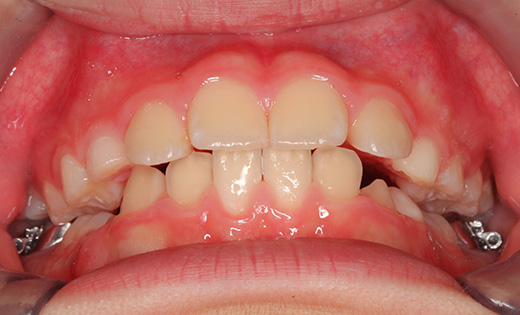
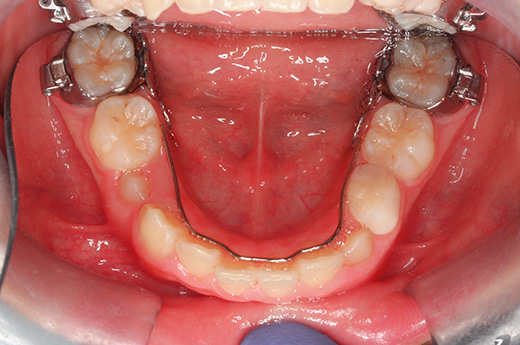
Initial 11years 1month
After two years since the first visit, all the baby teeth have been replaced by the permanent teeth and so we took records and observed the growth of the patient. This is the time to focus on the growth of the lower jaw rather than the alignment of the teeth. We could see from the MRI images that the growth of the lower jaw (which can be seen from our experience and the MRI data) was about to become active, so we decided to start orthodontic treatment at that point.
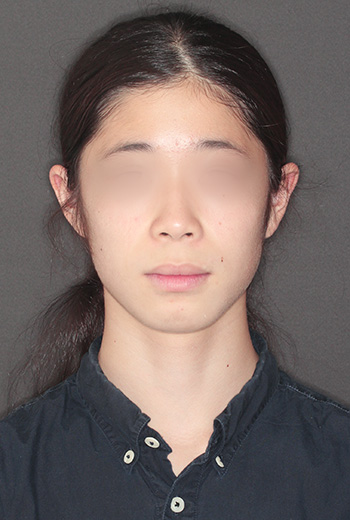
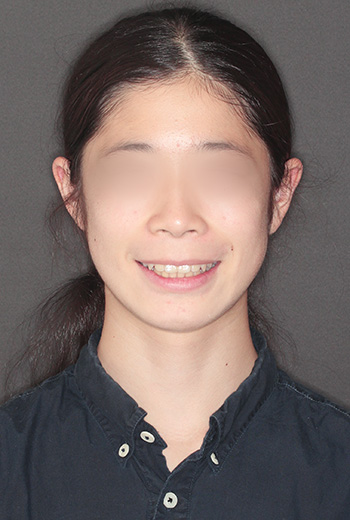
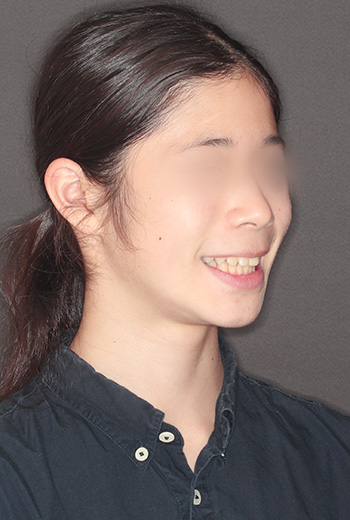
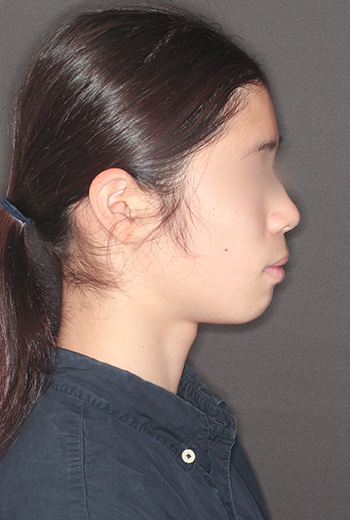
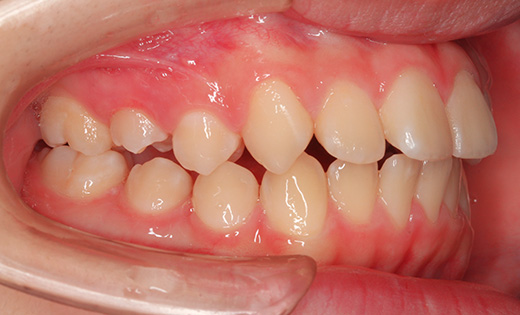
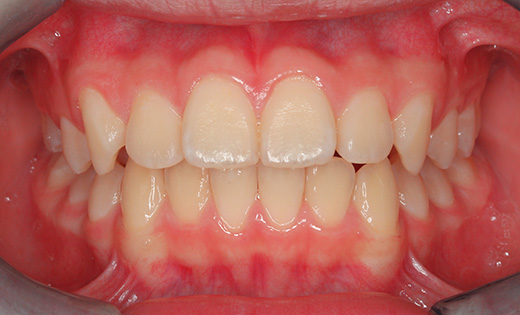
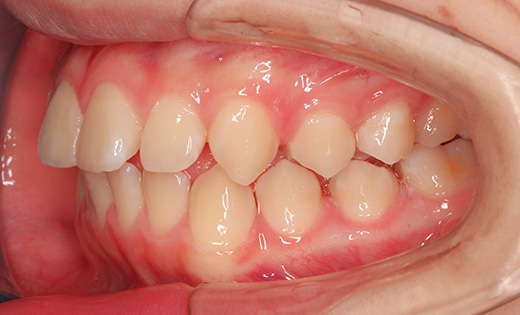
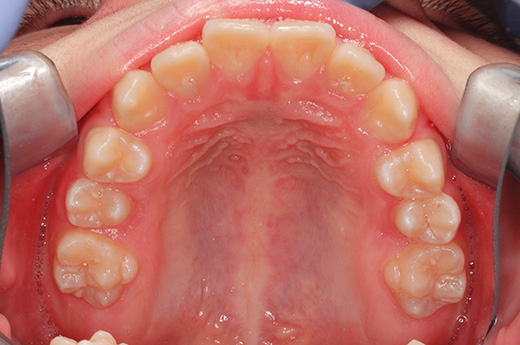


13 years and 4 months old when orthodontic treatment began. The position of the lower jaw has been stabilized by wearing a splint at night.
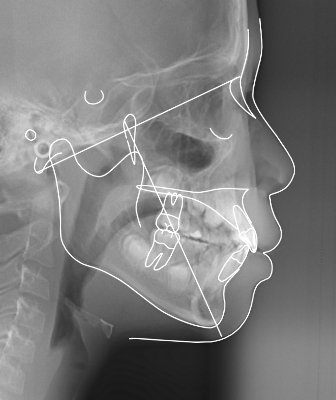

Comparing standard cephalometric X-rays at age 11 years and 1 month and age 13 years and 4 months, the lower jaw has grown significantly in about two years. As the lower jaw has grown forward, the airway has also expanded. This will prevent the onset of sleep apnea syndrome in the future.
The patient had protrusion of the upper and lower front teeth, and protruding lips (well represented by the Japanese who lived in the same apartment building as the main character in the movie "Breakfast at Tiffany's" starring Audrey Hepburn), so we extracted the premolars, while aligning his teeth and facial features. We also used the extraction space to rotate the lower jaw counterclockwise to bring his chin forward. Before orthodontic treatment began, the temporomandibular joint (TMJ) was adjusted to create a good environment, so the lower jaw had grown sufficiently. Orthodontic treatment was started at a time when the potential for growth could fully make the most of, so the lower jaw grew sufficiently and the chin came forward. When his treatment was completed at the age of 16, his teeth were aligned, and his facial features were very well-balanced. The goal of orthodontic treatment is not just the alignment of the teeth.
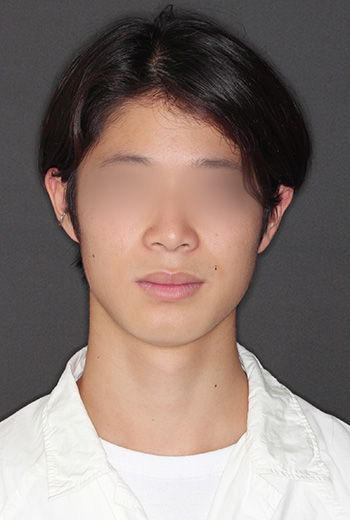
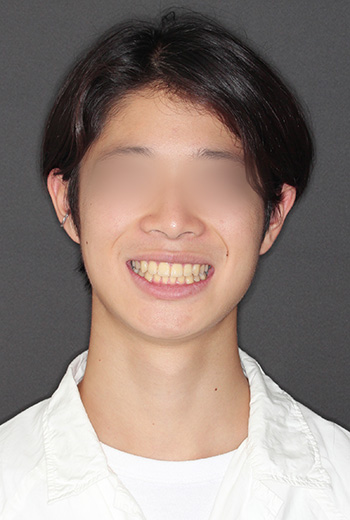
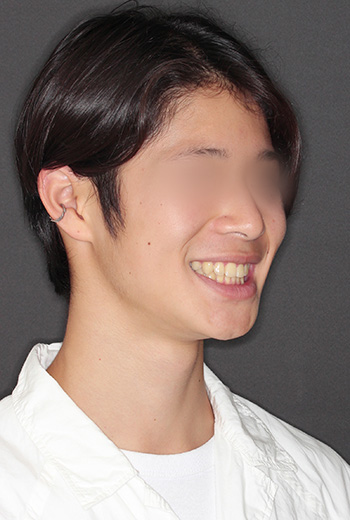
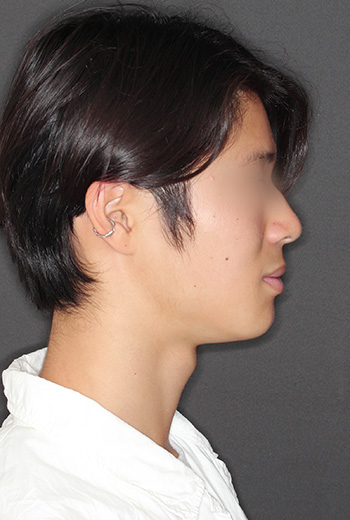

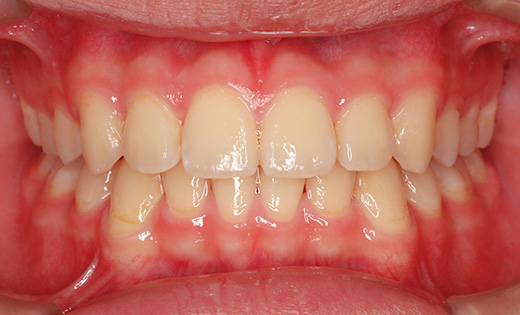
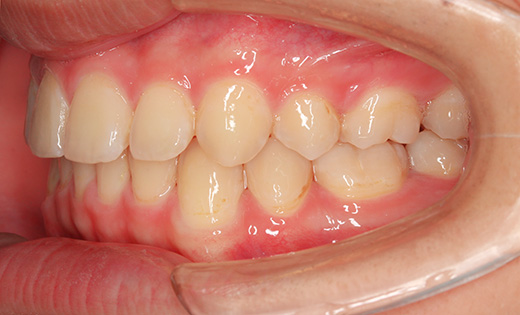
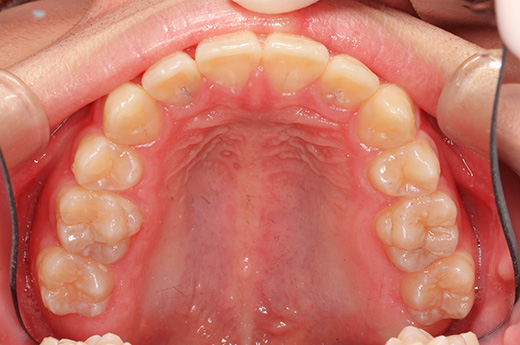
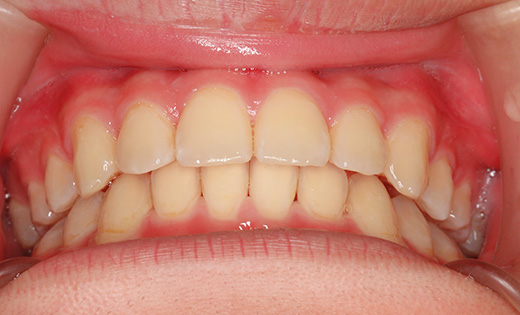
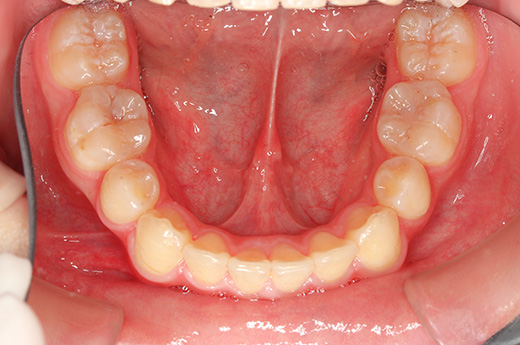
16 years and 4 months when orthodontic treatment finished, His facial features and teeth were perfectly aligned.
The orthodontic appliances used was an Edgewise Appliance (SWA), and four upper and lower premolars were extracted. The treatment period was two years and eight months, and the cost was 1,070,000 yen (excluding tax).
- Commonly cited risks of treatment include root resorption, pulp necrosis, caries development, gingival recession, the onset of temporomandibular joint disorder, and worsening periodontal disease, but none of these occurred in this case.


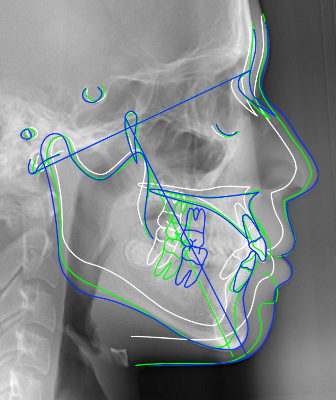
Comparison of standard cephalometric X-rays at the first consultation, at the start of orthodontic treatment, and at the end of treatment. The lower jaw continues to grow during orthodontic treatment, and the mechanics of orthodontic treatment rotate the lower jaw counterclockwise, causing the chin to protrude forward, which has a significant impact on the facial appearance. Extraction of premolars was necessary to align the teeth, but it has also contributed greatly to the improvement of the facial impression.
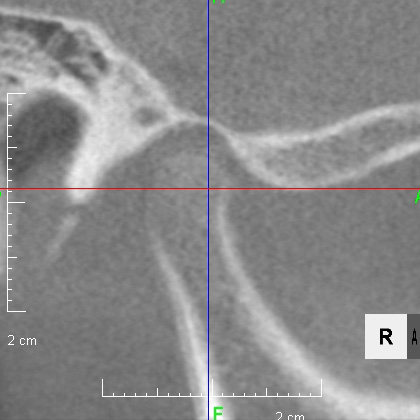

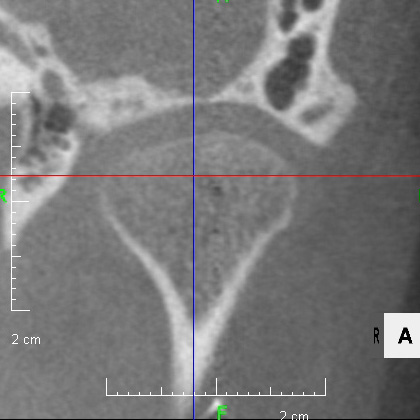

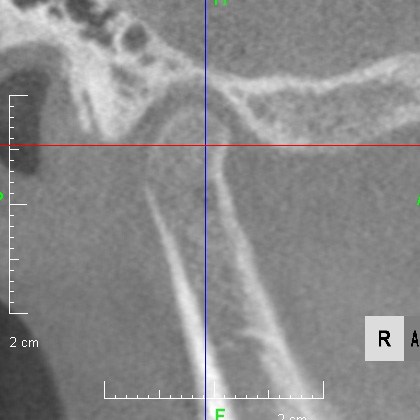
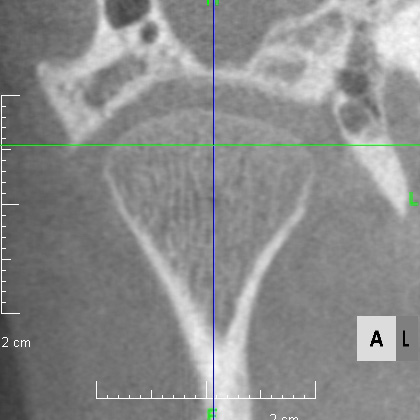
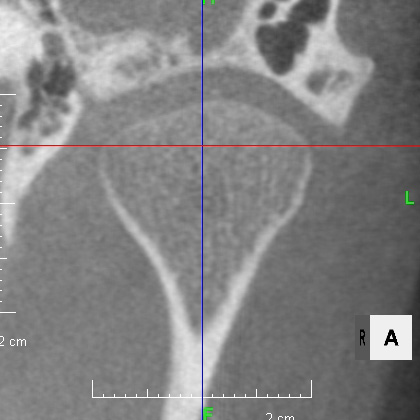
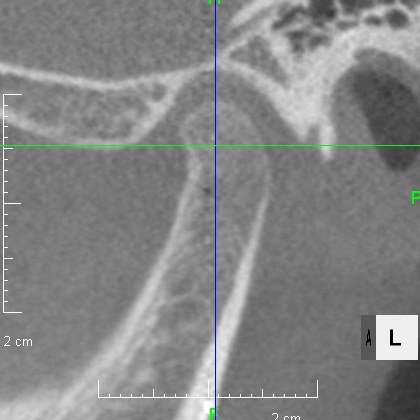
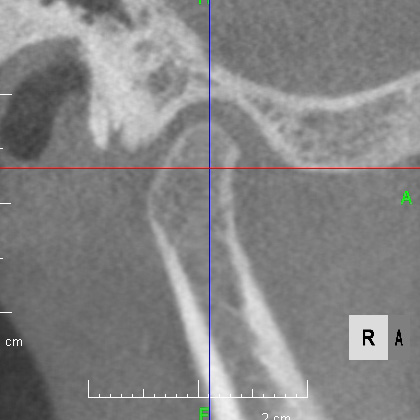



From above, a comparison of CBCT images of the temporomandibular joint at the first consultation, at the start of orthodontic treatment, and at the end of treatment. The CT scan shows that the mandibular condyles on either side of the lower jaw fit into the joint and have grown well forward and upward. The amount of growth of this mandibular condyle and the change in the forward and upward direction leads to counterclockwise growth of the lower jaw. This amount of growth, along with the direction of growth, creates forward growth of the chin.
To summarize this case, the timing of treatment is during the growth period, so we adjusted the condition of the temporomandibular joint before orthodontic treatment to encourage the growth of the lower jaw as much as possible, and avoided unnecessary treatment that would destabilize the position of the jaw. The important thing is the diagnosis and the treatment procedure.
